Fotos de vijay
Various Hells as descirbed in Markandeya Purana
The Brahmin said, 'O son! Describe in detail about hell.' Sumati said, 'O father! Yamadutas carry and lynch those people who eat inedible things, who deceive and dishonour their friends, who indulge in illicit relationships, who desert their wife, and who destroy public properties like gardens, water sources, etc. Yamadutas tie the hands and legs of such people and throw them into the fire. On their way to hell, such people are bitten by crows, storks, wolves, vultures, etc.
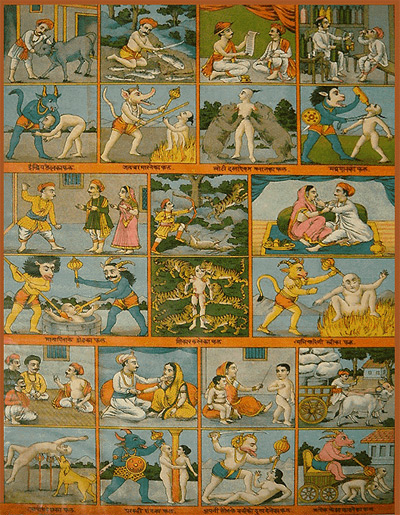
A description of different hells, from Sri Markandeya Purana, comprised of the dialogue between the sage Jaimini and the sage Markandeya.
The Brahmin said, 'O son! Describe in detail about hell.' Sumati said, 'O father! Yamadutas carry and lynch those people who eat inedible things, who deceive and dishonour their friends, who indulge in illicit relationships, who desert their wife, and who destroy public properties like gardens, water sources, etc. Yamadutas tie the hands and legs of such people and throw them into the fire. On their way to hell, such people are bitten by crows, storks, wolves, vultures, etc.
They stay in the inferno for a thousand years. Then they are shifted to another hell named Tama, which is always shrouded in darkness. Sinners who kill the cows and their brothers are thrown into this hell. They panic due to darkness and extreme cold. They get nothing to eat and drink. Moreover, chilling winds aggravates their miseries by making their bones stiff. These sinners then drink their own blood and eat their own flesh. They stay there until all their sins have been attenuated completely. Then they are thrown into yet another hell named Nikrintan, which revolves like the wheel of a potter.
Hoisting the sinners on the wheel, Yamadutas cut their organs but still their sufferings do not end, because the cut organs rejoin and get cut repeatedly. This continues for thousand of years. Then the sinners are put in Aprathisth hell where they experience unbearable sorrow and miseries. The sinners are then put in Chakrasankar hell where they are tormented with wheels and huge bells. They are disemboweled and their eyes are also pricked. The sinners have to pass through different hells, namely Asipatra, Taptakumbha and Lohakumbha.'
Yamaduta and the King of Videha
Sumati says, 'I was born in a Vaishya family, seven births before this present one. In that birth, I once prevented cows from drinking water. As a result of this sin, I was thrown in the hell named Daarun where I spent one hundred years without a drop of water.
Suddenly one day, a cool pleasant wind began to blow, its cool touch gave some relief to me. I saw that a Yamaduta was guiding a gentle looking man. Besides me, all the inmates of the hell felt extreme joy by the sight of that gentleman. The gentleman was asking that Yamaduta as to why he was being taken to the hell. From the words of that gentleman, it appeared that he was a renowned scholar. That man was, in fact, the ruler of a kingdom named Videha and was popular as the fosterer of his subjects.
Descriptions of Tortures in Hell
Thus asked by the gentleman, the Yamadutas replied politely, 'O king! You once deliberately prevented your wife Pivari from conceiving because you were more attracted to your second wife, Sushobhana. It is because of that action that you have been brought here to undergo severe torture.' The religious minded king said, 'I am willing to go wherever you want to take me, but before doing that I would like to have answers to my questions. I see many people undergoing severe tortures in this hell. Big and frightening crows prick their eyes. Tell me, for what sin they are facing such tortures.'
Yamaduta said, 'O king! Humans suffer or enjoy according to their Karmas. The effect of their Karmas diminishes in proportion to their sufferings. These crows are pricking the eyes of such people who had seduced other women and deceitfully acquired others' wealth. These people will suffer for the same number of years as their eyes blinked during the leering.
These crows prick the tongues of those people who had criticised the Vedas, Deities, Brahmins and teachers. Those who caused differences between friends, husband and wife, father and sons and relatives, or killed the performer of the yagyas are suffering under the saw. Those who insulted their parents and teachers have been thrown in the pit of pus, faeces and other excretions with their head down. Those who had food before offering it to the Deities, guests, servants, father and elders, fire and birds, stay in a pit of pus.
Iron nails are hammered into the ears of those people who gleefully heard the criticism of creatures, Deities, Brahmins and Vedas. Those who remarried their daughters to another person despite her former husband being alive are cut into pieces and thrown into saline river. Those who betrayed their friends are tied tightly with a rope. Worms, scorpion, crows and owls then bite their bodies.
Those who enjoyed carnal intimacy during daytime or had illicit relations with women are hammered with nails to a prickly Bombax tree. Those who insulted the Vedas and fire are thrown from the lofty peaks of a mountain. O king! Those who steal gold, those who a kill Brahmin, those who drink wine, and those who rape the wife of their teacher are burnt in fire.'
Attenuation of Sins
Yamaduta said, 'As a result of accepting money from a degraded person, a Brahmin takes birth as an ass. A Brahmin who carries out yagya for a degraded person takes birth as worm after undergoing severe sufferings in different types of hell. A person takes birth as an ass or an inferior bird as a result of abusing his parents. A person who does not worship his tutelary god before eating takes birth as a monkey. Traitors take birth as fish. Those who steal cereals take birth as mice.
A sudra, who manages to establish intimacy with a Brahmin woman takes birth as a worm. Similarly, killers of woman and children also take birth as worms. Ungrateful people take birth as worms, insects, grasshoppers, scorpion, crows, etc. Encroachers of land takes birth as grass shrubs, creepers and inferior trees. Butchers who kill bulls take birth as eunuchs. Thus a person has to face the result of his Karma according to the gravity of his sins.'
Sumati says, 'As Yamaduta began to push the king ahead, all the creatures in hell gave a loud cry, 'O king! Please stay here for few more moments. The wind that blows towards us after touching your body gives us immense joy. This wind has ended our sufferings and pains. Have pity on us.'
The king asked the Yamaduta, 'Why are these people so joyous by my presence?' Yamaduta said, 'O king! Initially, you used to sustain your body by the leftovers of the Deities, ancestors, guests and ascetics. This is the reason why the wind that blows touching your body is causing such pleasure to these people.' The king said, 'If I can eliminate the sufferings of these sinners merely by standing here, I will definitely stay here.' Yamaduta said, 'No, you cannot stay here. It is a place for the sinners only. Come with us. You will have to enjoy the pleasure of your pious action.' The king said, 'No, I will not go anywhere leaving these poor people in this pitiable condition.'
Yamaduta said, 'O king! Look, Dharma and Indra have themselves arrived to escort you to the heaven.' Dharma said, 'O king! You have worshipped me. Hence follow me to the heaven.' The king replied, 'No, I will not go anywhere leaving these thousands of people in the hell.' Indra said, 'Everyone has to taste the fruits of his Karmas. You cannot help them.'
The king said, 'O Indra! Tell me, how virtuous was I in my previous life?' Dharma said, 'Though your pious actions are fathomless, be sure that their significance are not much more than drops of water in an ocean, or the stars in the sky. The kindness you have shown towards these sinners has further enhanced your virtuosity.' The king said, 'If it is so, may all these people be released from their sufferings by the virtue of my good Karmas.' Indra said, 'O king! By your words, your pious action has increased like the height of the mountain and these sinners have also been released from their sufferings.
The Brahmin said, 'O son! Describe in detail about hell.' Sumati said, 'O father! Yamadutas carry and lynch those people who eat inedible things, who deceive and dishonour their friends, who indulge in illicit relationships, who desert their wife, and who destroy public properties like gardens, water sources, etc. Yamadutas tie the hands and legs of such people and throw them into the fire. On their way to hell, such people are bitten by crows, storks, wolves, vultures, etc.
They stay in the inferno for a thousand years. Then they are shifted to another hell named Tama, which is always shrouded in darkness. Sinners who kill the cows and their brothers are thrown into this hell. They panic due to darkness and extreme cold. They get nothing to eat and drink. Moreover, chilling winds aggravates their miseries by making their bones stiff. These sinners then drink their own blood and eat their own flesh. They stay there until all their sins have been attenuated completely. Then they are thrown into yet another hell named Nikrintan, which revolves like the wheel of a potter.
Hoisting the sinners on the wheel, Yamadutas cut their organs but still their sufferings do not end, because the cut organs rejoin and get cut repeatedly. This continues for thousand of years. Then the sinners are put in Aprathisth hell where they experience unbearable sorrow and miseries. The sinners are then put in Chakrasankar hell where they are tormented with wheels and huge bells. They are disemboweled and their eyes are also pricked. The sinners have to pass through different hells, namely Asipatra, Taptakumbha and Lohakumbha.'
Yamaduta and the King of Videha
Sumati says, 'I was born in a Vaishya family, seven births before this present one. In that birth, I once prevented cows from drinking water. As a result of this sin, I was thrown in the hell named Daarun where I spent one hundred years without a drop of water.
Suddenly one day, a cool pleasant wind began to blow, its cool touch gave some relief to me. I saw that a Yamaduta was guiding a gentle looking man. Besides me, all the inmates of the hell felt extreme joy by the sight of that gentleman. The gentleman was asking that Yamaduta as to why he was being taken to the hell. From the words of that gentleman, it appeared that he was a renowned scholar. That man was, in fact, the ruler of a kingdom named Videha and was popular as the fosterer of his subjects.
Descriptions of Tortures in Hell
Thus asked by the gentleman, the Yamadutas replied politely, 'O king! You once deliberately prevented your wife Pivari from conceiving because you were more attracted to your second wife, Sushobhana. It is because of that action that you have been brought here to undergo severe torture.' The religious minded king said, 'I am willing to go wherever you want to take me, but before doing that I would like to have answers to my questions. I see many people undergoing severe tortures in this hell. Big and frightening crows prick their eyes. Tell me, for what sin they are facing such tortures.'
Yamaduta said, 'O king! Humans suffer or enjoy according to their Karmas. The effect of their Karmas diminishes in proportion to their sufferings. These crows are pricking the eyes of such people who had seduced other women and deceitfully acquired others' wealth. These people will suffer for the same number of years as their eyes blinked during the leering.
These crows prick the tongues of those people who had criticised the Vedas, Deities, Brahmins and teachers. Those who caused differences between friends, husband and wife, father and sons and relatives, or killed the performer of the yagyas are suffering under the saw. Those who insulted their parents and teachers have been thrown in the pit of pus, faeces and other excretions with their head down. Those who had food before offering it to the Deities, guests, servants, father and elders, fire and birds, stay in a pit of pus.
Iron nails are hammered into the ears of those people who gleefully heard the criticism of creatures, Deities, Brahmins and Vedas. Those who remarried their daughters to another person despite her former husband being alive are cut into pieces and thrown into saline river. Those who betrayed their friends are tied tightly with a rope. Worms, scorpion, crows and owls then bite their bodies.
Those who enjoyed carnal intimacy during daytime or had illicit relations with women are hammered with nails to a prickly Bombax tree. Those who insulted the Vedas and fire are thrown from the lofty peaks of a mountain. O king! Those who steal gold, those who a kill Brahmin, those who drink wine, and those who rape the wife of their teacher are burnt in fire.'
Attenuation of Sins
Yamaduta said, 'As a result of accepting money from a degraded person, a Brahmin takes birth as an ass. A Brahmin who carries out yagya for a degraded person takes birth as worm after undergoing severe sufferings in different types of hell. A person takes birth as an ass or an inferior bird as a result of abusing his parents. A person who does not worship his tutelary god before eating takes birth as a monkey. Traitors take birth as fish. Those who steal cereals take birth as mice.
A sudra, who manages to establish intimacy with a Brahmin woman takes birth as a worm. Similarly, killers of woman and children also take birth as worms. Ungrateful people take birth as worms, insects, grasshoppers, scorpion, crows, etc. Encroachers of land takes birth as grass shrubs, creepers and inferior trees. Butchers who kill bulls take birth as eunuchs. Thus a person has to face the result of his Karma according to the gravity of his sins.'
Sumati says, 'As Yamaduta began to push the king ahead, all the creatures in hell gave a loud cry, 'O king! Please stay here for few more moments. The wind that blows towards us after touching your body gives us immense joy. This wind has ended our sufferings and pains. Have pity on us.'
The king asked the Yamaduta, 'Why are these people so joyous by my presence?' Yamaduta said, 'O king! Initially, you used to sustain your body by the leftovers of the Deities, ancestors, guests and ascetics. This is the reason why the wind that blows touching your body is causing such pleasure to these people.' The king said, 'If I can eliminate the sufferings of these sinners merely by standing here, I will definitely stay here.' Yamaduta said, 'No, you cannot stay here. It is a place for the sinners only. Come with us. You will have to enjoy the pleasure of your pious action.' The king said, 'No, I will not go anywhere leaving these poor people in this pitiable condition.'
Yamaduta said, 'O king! Look, Dharma and Indra have themselves arrived to escort you to the heaven.' Dharma said, 'O king! You have worshipped me. Hence follow me to the heaven.' The king replied, 'No, I will not go anywhere leaving these thousands of people in the hell.' Indra said, 'Everyone has to taste the fruits of his Karmas. You cannot help them.'
The king said, 'O Indra! Tell me, how virtuous was I in my previous life?' Dharma said, 'Though your pious actions are fathomless, be sure that their significance are not much more than drops of water in an ocean, or the stars in the sky. The kindness you have shown towards these sinners has further enhanced your virtuosity.' The king said, 'If it is so, may all these people be released from their sufferings by the virtue of my good Karmas.' Indra said, 'O king! By your words, your pious action has increased like the height of the mountain and these sinners have also been released from their sufferings.
Sri Airavata: Lord Indra's Divine Vahana
Airavata is the white elephant who carries Lord Indra. According to the Ramayana, Airavata's mother was Iravati, the daughter of Kadru and granddaughter of Kasyapa. According to the Matangalila, Airavata was born when Lord Brahma sang sacred hymns over the halves of the egg shell from which Garuda hatched. He was followed at birth by seven more male and eight female elephants.
Tara Mahavidya's Synchronous
Alliance with Sankarshan Balabhadra
Alliance with Sankarshan Balabhadra
The ten incarnations of the Adi Sakti or the divine primeval force are known as Dasa Mahavidya. Tara Mahavidya is placed second in the order. The Daksa-yajna legend conceived in the Mahabharata is of major importance in regard to the origin of Dasa-Mahavidya. According to the versions of Matsya and Padma Purana, Sati, one of the daughters of Daksa, happened to be the spouse of Lord Sadasiva.
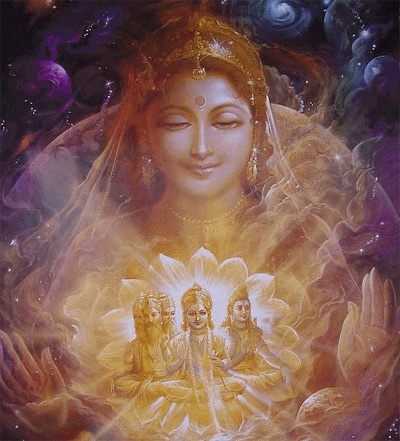
The ten incarnations of the Adi Sakti or the divine primeval force are known as Dasa Mahavidya. Tara Mahavidya is placed second in the order. The Daksa-yajna
a sacrifice, generally referring to the offering of sacrificial oblations of ghee into a sacred fire'); return false">yajna legend conceived in the Mahabharata is of major importance in regard to the origin of Dasa-Mahavidya. According to the versions of Matsya and Padma Purana, Sati, one of the daughters of Daksa, happened to be the spouse of Lord Sadasiva. Once Siva was intentionally not invited to one Daksa-yajna arranged by his father-in-law, who considered Him as uncivilized and lower in rank to great gods, for which he felt much insulted. Being agitated, He set Himself out on a spree to decimate the entire creation.
On the other hand, in spite of the vehement denial of Siva, Sati made up Her mind to attend the yajna arranged by Her father. Consequent on final refusal of infuriate Siva, Adi Sakti, being annoyed, appeared in ten different forms, blocking the paths of Siva leading to all His ten directions. After seeing such powerful Saktis all around Him, a fearful Siva asked them, "Who are you all? Where is my Sati?" The unique reply (daiba-bani) received from Bhairabi was, "I am your Sati, the furious images found around you are my ten different incarnations, do not be afraid of them."
'Dasadikhyu mahabhima yu eta dasa-murtyah,
sarba mameyib ma Sambho bhayamkaru mahamate.'
sarba mameyib ma Sambho bhayamkaru mahamate.'
At this juncture Siva had no other choice except to permit Sati to go and see the yajna. These ten forms of Adi Sakti are popularly known as Dasa-Mahavidya.
Padmanabha Mahapatra Kali Tara Maha-vidya Sodashi Bhubaneswari
Bhairavi Chinnamasta ch vidya Dhumabati tatha/
Bagala siddhavidya ch Matangi Kamalatmika
Eta Dasa-Mahavidyah Siddhavidya Prakirtitah//
(Chamunda Tantra)
Bhairavi Chinnamasta ch vidya Dhumabati tatha/
Bagala siddhavidya ch Matangi Kamalatmika
Eta Dasa-Mahavidyah Siddhavidya Prakirtitah//
(Chamunda Tantra)
Kali was standing in front of Siva, Tara on His forehead, Chinnamasta on His right, Bhubaneswari on His left, and Bagala on His back side. Dhumabati, Kamala, Matangi and Shodashi obstructed Siva from his agneya, nairuta, bayu and aishanva directions, respectively. The Sakti who talked with Siva directly was Bhairabi.
The worship of Kali, Tara and Bhubaneswari is prominent in Orissa, but not the other Mahavidyas. On the high platform Ratnavedi inside the inner sanctum of Lord Jagannatha's Puri Srimandir, the major images seated are Balabhadra, Purusottam Jagannath and mother Subhadra. According to the Tantra Sastras, Srikhsetra is a major Shakti Pitha. Sri Balabhadra, Sri Jagannath and Maa Subhadra are seated on Sri Tara Yantra, Kalika Yantra and Bhubaneswari Yantras, respectively. 'Ugratara Shulapanih Subhadra Bhubaneswari Niladrau tu Jagannathh sakhyat Dakhinakalika.'//
Even though Tara Mahavidya is placed second in the order of the ten forms of the Adi Sakti, its detailed elaboration is made initially in this article because it has a link with Sri Balabhadra within Srimandir. We pray to Balabhadra first, before Jagannath and Subhadra, as He happens to be the elder brother. Orissa Review * November - 2008
'Tarayati Anaya Sa' - 'Tara'.
Tara is the Sakti who ferries Her devotees across the worldly ocean. She protects Her devotees from the three miseries: daihika (relating to body), daivika (relating to destiny) and bhautika (relating to worldly affairs). She is the most benevolent mother who constantly liberates the distressed souls, wandering in many different yonis or life forms, passing through the cycle of birth and death. She is Brahma Sukti Taran Kurtr', so is designated as Tara. She saves the humanity from radical (ugra) dangers, so is named as Ugratara. According to Yogini Tantra, She is Girindra Tanaya Girija
'Ugraa byagraa Ugratara Girija Girimandanaa, Girindratanayaa Tara Girirajo Paristhitaa.'
In Tantric literatures we find three manifestations of Tara, such as Eka Jata, Ugra Tara, and Nila Saraswati. She is called Eka Jata because She provides kaivalya or unity with the Absolute. She provides relief from unforeseen severe miseries, Ugradd bhayadd trait debann naramscha', so She is named as Ugra Tara. She is known as Nila Saraswati as She imparts knowledge (jnana) to Her devotees. Tara is the presiding Goddess of speech and the Sakti of hiranya garvu saura brahma, or Sunincarnet, so She is the successful owner of surya pralaya. She is the Tara in the highest part of the sky who appears to be small in size, but protects the humanity out of the Bhaba-sagara. The Tara-Sadhak becomes well accomplished in all the branches of literature. Vyasha Muni could work on and complete the eighteen Mahapurans due to the grace of Goddess Tara.
The great sage Bashistha tops the list of Her devotees. As per the Swatantra Tantra, before proceeding to Banabasa, Sri Ramchandra met with Kulaguru Bashistha to obtain his blessings. In turn, Kulaguru baptized and trained him in the Tara cult - Moro paschima teere tu chola nakhyo hrudamahann, tatra yajne swayam Tara devi Neela-Saraswati. Tara was the most favourite deity of the Buddhist Tantrics; according to them, Tara saves the human beings from five kleshs, such as abidya, asmita, raga, dwesh and abhinivesh.
The aspirants of the Tara cult get success in realizing all the four purusharths, such as dharma (obligation), artha
"Meaning"'); return false">artha (wealth), kama (desires), and mokshya (salvation) without hazardous special effects. Tara is always away from the Maya or the Prapancha, and is also within it, because it is Her own creation. She provides materialistic bliss (bhoga) initially and salvation (mokyha) at the later stage. Tara is surrounded with eight Yoginis, they are: Mahakali, Rudrani, Ugra, Bhima, Ghora, Bhramari, Maharatri and Bhairabi.
The iconographic picture of Goddess Tara as prescribed in the Nila Tantra reads as below:
Pratyalidha padaam ghoraam mundamala bibhushitam,
Kharbamlambodaram bhimam byaghracharmam brutam kato /
Nabayauban-sampanam padmamudra bibhushitam,
Chaturbhuijam lalajiwham mahabhimam barapradam/
Khadga karti samayukta sabyetarbhuja dwayam,
Kapalotpalasamyuktam sabyopani yuganitam /
Pingomchokrajatam dhayeno labekhyobhah bhusitam,
Jwalachita madhyabastham ghoradrastam karalinim/
Swabeshsmara badanam strotalankar bibhusitam,
Biswabyapak tyoyantah swetapadma parasthitam/
She is standing in the Pratyalidha pose, She is of short stature with a protruded belly and Her complexion is dark-blue. She has a terrible appearance with tigers skin at Her waist and garland of human-heads at Her neck. She is the prime of Her youth and is adorned with Pancha Mudras. She has in her four hands khadga (sword), indivara (lotus), kartrika (shear) and khappara (human skull). Her tongue is held out and She wears a single braid of matted hair on Her head. Three-eyed Tara stands on the corpse lying on the burning funeral pyre and ranges Her feet, which appear to be terrible. She is ever ready to remove the darkness of ignorance and passiveness of Her devotees.Kharbamlambodaram bhimam byaghracharmam brutam kato /
Nabayauban-sampanam padmamudra bibhushitam,
Chaturbhuijam lalajiwham mahabhimam barapradam/
Khadga karti samayukta sabyetarbhuja dwayam,
Kapalotpalasamyuktam sabyopani yuganitam /
Pingomchokrajatam dhayeno labekhyobhah bhusitam,
Jwalachita madhyabastham ghoradrastam karalinim/
Swabeshsmara badanam strotalankar bibhusitam,
Biswabyapak tyoyantah swetapadma parasthitam/
The Ganga Gajpatis of Orissa established one temple of Ugra Tara at Mulajhargarh, near Bhusandapur Railway Station in the district of Khurda. Ugra Tara was the presiding and the protecting Goddess of the fort of Mulajhargarh, which was just in the border of Chilika Lake. Even though in course of time this fort of Orissa has been lost to oblivion, still the Goddess Ugra Tara, then the Deity of the fort, was worshipped by Brahmin priests under Tara mantra
a sound, syllable, word, or group of words that manifest spiritual power when chanted'); return false">mantra, and offered cooked vegetarian and non-vegetarian items. [In fact, the offering of meat to Tara was never bona fide, and was an act performed by so-called brahmans who had departed from strict adherence to the Vedas.]
Tara is synonymous with Omkar, the five components of Omkar are - A, U, M, nada and bindoo. The Mantra propitiating Tara has also five bijas (seed words). Her companion is Aksobhya, Sri Sadasiva. The visionary of the Mantra is Aksobhya Rsi, the Mantra is metered in Brihati Chanda, its presiding deity is Sri Tara Devata, its bija is Hum and Phat, the remaining alphabates are the Kilaka, the Viniyogah is linked to the achievements of four Purusarthas, i.e., Artha, Dharma, Kama and Mokhya. According to another Tantric procedure, Hrim is the Bija, Hrum is the Sakti and Strim is the Kilak.
The puja
a ritual worship ceremony'); return false">puja Paddhati of Sri Balabhadra, followed in Srimandir, Puri at present has much more similarities with the Tantric Puja system under Tara Mahavidya. It is interesting to know that the Niladri Mahodaya, a treatise on the rituals of Lord Jagannath, equates Balabhadra Sankarshan with Tara, Subhadra with Bhubaneswari and Jagannath as Dakhina Kalika - all three tantric Goddesses under Dasa Mahavidya:
Tara sakhyat Shulapani Subhadra Bhubaneswari / Niladrau
Jagannathstu swayamm Dakhinakalika//
Jagannathstu swayamm Dakhinakalika//
The process of ritual purification up to matraka-nyasa is common in respect of the Puja system of Balabhadra, Subhadra and Jagannath, but the devata-nyasas and the system followed thereafter vary according to the deity due for worship. In Orissa, the worshipper of Balabhadra thereafter takes up the srikanthadi-nyasa with the placement of Siva with Sakti. Its pranab is Omkar, the visionary of the mantra is Dakhinamurti Rsi, the mantra is metered in Gayatri Chanda, Arddhanariswar is the Devata, the bija is Hrim and the Sakti is Sam.
The Dhyana-verses codified to meditate upon the presiding Deity of the Srikanthadi-nyasa (Siva and Parvati in their combined form) describe the hermaphrodite form of Siva and underline the basic oneness of the male and female form of the divinity. One such Dhyana-verse of Sri Balabhadra, which has a reference with the Durga-Saptasati, is quoted below.
Bandhuka-kanchananibham ruchirakshyamalam,
Pashankusau ch, baradam nijabahudandaih /
Bibhran-mindu-shakala-aabharanam trinetram,
Ardhambikesh-manisham bapu-rashrayamah //'
Pashankusau ch, baradam nijabahudandaih /
Bibhran-mindu-shakala-aabharanam trinetram,
Ardhambikesh-manisham bapu-rashrayamah //'
This is a peculiar instance of the synchronism of Sakta-Vaishnab Tatwa under the Jagannath cult. The easiest way to achieve the Siddhi on the part of the Tara-sadhak, has been interpreted in the Tara Kapura Raja Stotra (verse 20), which reads as follows:
'Tamograsthe chandre yadi japati lokah stabamanum/
Nabamyam ba matardhranidharkanye bitanute //
Tatha surye pruthuibalaya tilakah kabyatatinii /
Payodhih siddhiinam bhabati bhabasnam sarbabiditam //'
Nabamyam ba matardhranidharkanye bitanute //
Tatha surye pruthuibalaya tilakah kabyatatinii /
Payodhih siddhiinam bhabati bhabasnam sarbabiditam //'
If the Sadhak chants this Mantra on the date of lunar or solar eclipses, he becomes capable of mastering all the siddhis, or the supernatural powers. Whoever completely surrenders before Her with humble motive, She takes care of by sheltering him under Her supreme grace and mitigates all his sorrows and sufferings.
[ Author Padmanabha Mahapatra is a purohit of Sri Jagannatha Mandir in Puri. ]
[ Author Padmanabha Mahapatra is a purohit of Sri Jagannatha Mandir in Puri. ]
The Festival of Jagannath Mishra
The Festival of Jagannath Mishra is an observance of the Jata karma samskara for baby Nimai (Sri Chaitanya Mahaprabhu). Following the fast for Gaura Purnima, which is broken upon the rising of the moon, the next day is held for feasting. On Jagannath Mishra festival day, the devotees meditate upon the Jata karman ceremony. The festival is also known as Anandotsava amongst the Gaudiya Matha devotees.
This newsletter is sent to 129,121 subscribers.
To subscribe, please visit: http://www.indiadivine.org/subscribe.htm
To unsubscribe, please visit: http://www.indiadivine.org/unsubscribe.htm
To subscribe, please visit: http://www.indiadivine.org/subscribe.htm
To unsubscribe, please visit: http://www.indiadivine.org/unsubscribe.htm

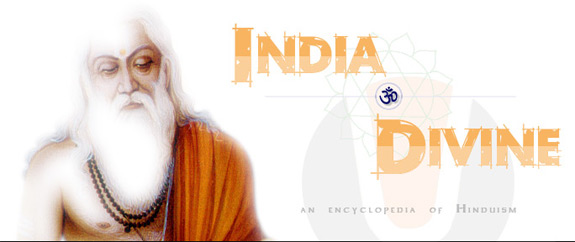
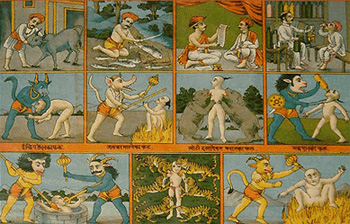
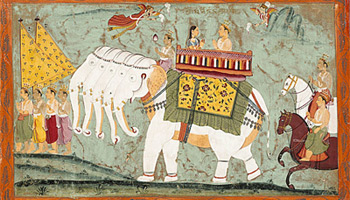
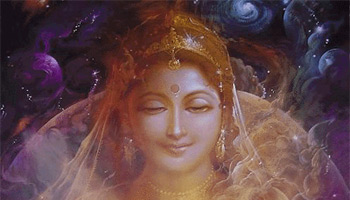
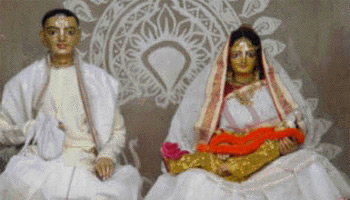

No hay comentarios:
Publicar un comentario